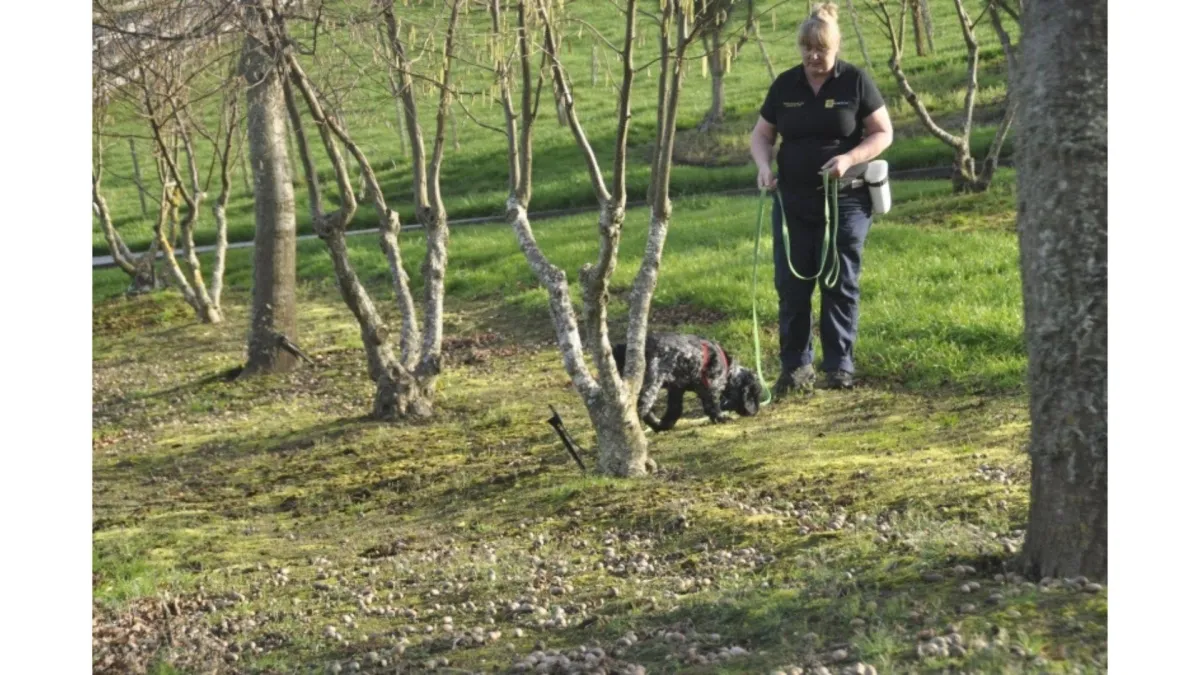
Truffles
Truffles are types of edible mushrooms (fungi) that grow on the roots of certain trees. They traditionally grew wild in forests in the northern hemisphere but can now be ‘farmed’ on specially-inoculated trees.
Truffles are grown successfully in various areas of New Zealand, but there is still much we don’t know about growing them so production is not guaranteed.
Growing requirements
Truffles grow on the roots of the host tree so initially, the host tree requires the right conditions to flourish.
Subsequent truffle production requires a free-draining, well-aerated topsoil, warmth, moisture, and, most importantly and challenging to create, an alkaline soil – ideally a pH of 7.9. This is a lot higher than most NZ soils, and it takes over a ton of lime per hectare to raise 10cm of soil 0.1 unit of pH. (For example, to raise pH from 6 to 7.9 in the top 30cm would require at least 57 tonnes of lime.)
Truffles’ natural habitat is hot exposed land in France, Italy, and Spain, where there are warm summers (max. 26.2oC) and cool winters (min. 1.6oC). It is reasonable to surmise those are the ideal conditions, but truffles have been produced in a wider climate range.
Choosing the right variety for you
There are various species of truffles, which will grow on various trees but only a few are available in New Zealand.
The most lucrative is the Périgord, the black truffle. That, and the Burgundy and Bianchetto (the Italian white truffle) are available on oak and hazel trees. Bianchetto can also be grown on radiata and stone pine.
Painted suillus have been grown on Douglas Fir and Saffron Milkcap on radiata pine, but are not commercially available at the moment.
Planting
Inoculated trees should not be planted near other trees with competing fungi on their roots as this can overwhelm the truffle fungi.
Avoid contamination by ensuring all boots and equipment is clean.
Light (and warmth) is required in the soil so the spacing of the trees should be adequate to allow sunlight to the ground as the canopy grows or excessive pruning will be required.
Feeding
The common host trees do well in balanced NZ soils with the pH maintained for truffle production. Internationally, organic mulch with a pH of 8 is used.
Trace minerals and boron levels should be monitored.
(Note that chemical phosphatic fertilisers can inhibit the growth of the truffle mychorrizae.)
Pruning
Prune trees to allow light to warm the soil if required.
Disease
The main threat to truffles is other competing fungi. Source inoculated trees from a reputable grower who tests for and provides a certificate to advise that the inoculation has been successful and is free from contamination. Once you have unwanted infections in your plantation, they are almost impossible to eradicate. Biosecurity with equipment and visitors is important.
Maintaining the high pH in the soil combats competing mycorrhizae.
Rats, mice, and slugs can eat forming truffles.
Harvesting
Truffles grow in the top 5-10 cm of soil and look exactly like a lump of soil. But truffles have a strong and unique smell when ripe and this is how they are located. The smell is identical to a sex-pheromone of a pig, which was historically used to find them, but since pigs also have a tendency to eat them, it is now more common to use trained dogs instead.
There are several services in New Zealand that will bring dogs in to hunt for truffles for a fee.
Truffles ripen mid-winter to early spring and only have a shelf life of about 10 days so regular searching is required.
They are best eaten fresh though there are various ways of trying to preserve the flavour in oil, butter, or salt.
Growing truffles is really growing trees, with adequate warmth and irrigation to the roots over summer.

